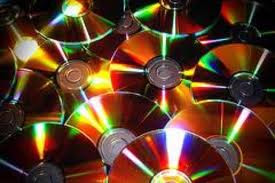Examples of Storage Device
A data storage device is a device for recording (storing) information (data). Recording can be done using virtually any form of energy, spanning from manual muscle power in handwriting, to acoustic vibrations in phonographic recording, to electromagnetic energy modulating magnetic tape and optical discs.
A storage device may hold information, process information, or both. A device that only holds information is a recording medium. Devices that process information (data storage equipment) may either access a separate portable (removable) recording medium or a permanent component to store and retrieve information.
A USB flash drive consists of a flash memory data storage device integrated with a USB (Universal Serial Bus) interface. USB flash drives are typically removable and rewritable, and physically much smaller than a floppy disk. Most weigh less than 30 g (1 oz). Storage capacities in 2010 can be as large as 256 with steady improvements in size and price per capacity expected. Some allow 1 million write or erase cycles and have a 10-year data retention cycle.
A floppy disk is a data storage medium that is composed of a disk of thin, flexible ("floppy") magnetic storage medium sealed in a square or rectangular plastic carrier lined with fabric that removes dust particles.
Floppy disks are read and written by a floppy disk drive or FDD, Invented by the American information technology IBM, floppy disks in 8 inch, 5¼ inch and 3½ inch forms enjoyed nearly three decades as a popular and ubiquitous form of data storage and exchange, from the mid-1970s to the late 1990s. While floppy disk drives still have some limited uses, especially with legacy industrial computer equipment, they have now been superseded by USB flash drives, external hard disk drives, optical discs, memory cards and computer
networks.
................................................................................................................................................................



















